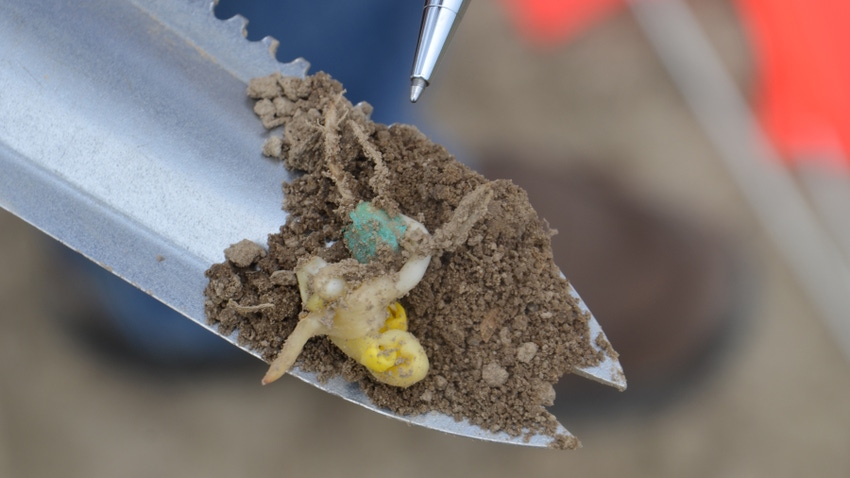May 1, 2023

by Dan Quinn
Once the corn seed is planted, the waiting game for the first plants to emerge begins. That can turn into worrying if issues occur. Corn typically requires 100 to 120 growing degree days to emerge. Both air and soil temperatures have a large influence on corn emergence timing.
To calculate growing degree days, determine the average daily air temperature (high plus low divided by 2.) Subtract the base temperature, which for corn is 50 degrees F. If daily high and low temperatures are below 86 degrees and above 50 degrees, use actual temperatures. However, if temperatures are above 86 degrees or below 50 degrees, use 86 or 50 in the formula.
When soil temperatures are very warm, corn can emerge in four to five days. If soil temperatures are cool, it may take upward of 20 to 30 days to emerge. Factors such as residue coverage, seed depth and soil moisture may also influence soil temperature and emergence timing.
Just because your thermometer in the soil says 50 degrees F, it doesn’t mean corn plants won’t take a while to emerge. They could potentially be exposed to issues before emergence occurs, especially if soil temperatures remain around 50 degrees F.
Emergence begins
Emergence starts with elongation of the mesocotyl. This is the white, stemlike tissue that connects the seed to the base of the coleoptile. It is essential for transferring energy from the seed to the seedling.
The mesocotyl moves the coleoptile toward the surface. The coleoptile is a protective sheath that surrounds the primary shoot and inner leaves. It consists of the first inner leaves and is noticeable as corn breaks the soil surface.
Once the coleoptile tip reaches the surface, light exposure disrupts elongation and causes it to stop. Interestingly, once elongation stops, the depth of the coleoptile base will typically remain constant at about ¾ inch below the surface. You can use the length of the mesocotyl and add ¾ inch to help determine how deep corn was planted.
Exposure to sunlight causes the coleoptile tip to soften and allows for expansion of inner leaves. This is the VF stage. The first true leaf emerges from the tip of the coleoptile.
Diagnosing problems
In certain cases, corn emergence issues occur if the coleoptile splits underground. This can cause premature leaf emergence below the surface. Factors that can cause this include exposure to sunlight too soon, such as due to poor seed furrow closure.
Problems can also be linked to herbicide injury, which may appear as a corkscrew coleoptile. Surface crusting or sidewall compaction can also result in the corkscrew coleoptile effect. Meanwhile, cold injury often distorts the mesocotyl, resulting in a corkscrew mesocotyl formation.
Therefore, when assessing emergence and stand establishment issues in corn following planting, it is almost always important to take a shovel or trowel with you. Assess various corn plants and evaluate root health belowground.
To learn more about how a corn plant should emerge, a good reference is The Emergence Process in Corn by Bob Nielsen, a retired Purdue Extension corn specialist.
Quinn is a Purdue Extension corn specialist. Contact him at [email protected] or on Twitter @PurdueCorn.
Read more about:
EmergenceYou May Also Like




